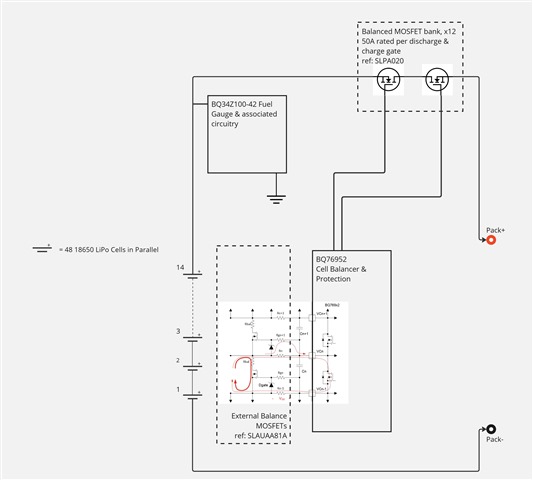Other Parts Discussed in Thread: BQ34Z100-R2, BQ79616, BQ78706, BQ76952
Tool/software:
Hi there, I'm a new member of a very small team creating large tactical battery storage systems, and I was hoping to get some guidance towards products for my design. I'm pretty new to battery pack BMS design as well, so I'd love to be shown some good design resources on the topic.
I will be designing a BMS capable of protecting and balancing a few hundred 18650 Lithium battery cells stacked in a 14 cell series. This first design should be as simple as possible, so I was looking at the option of building a BMS based on the stackable bq77915. I was also thinking of using a separate fuel gauge chip to indicate state of charge and track state of health.
The current discharge will be quite large, about 150A draw, so I figure I'll need to use balanced power MOSFETs to facilitate all of that current.
Any resources on BMS design, Safety, or better chip set recommendations would be much appreciated!
Thank you!


